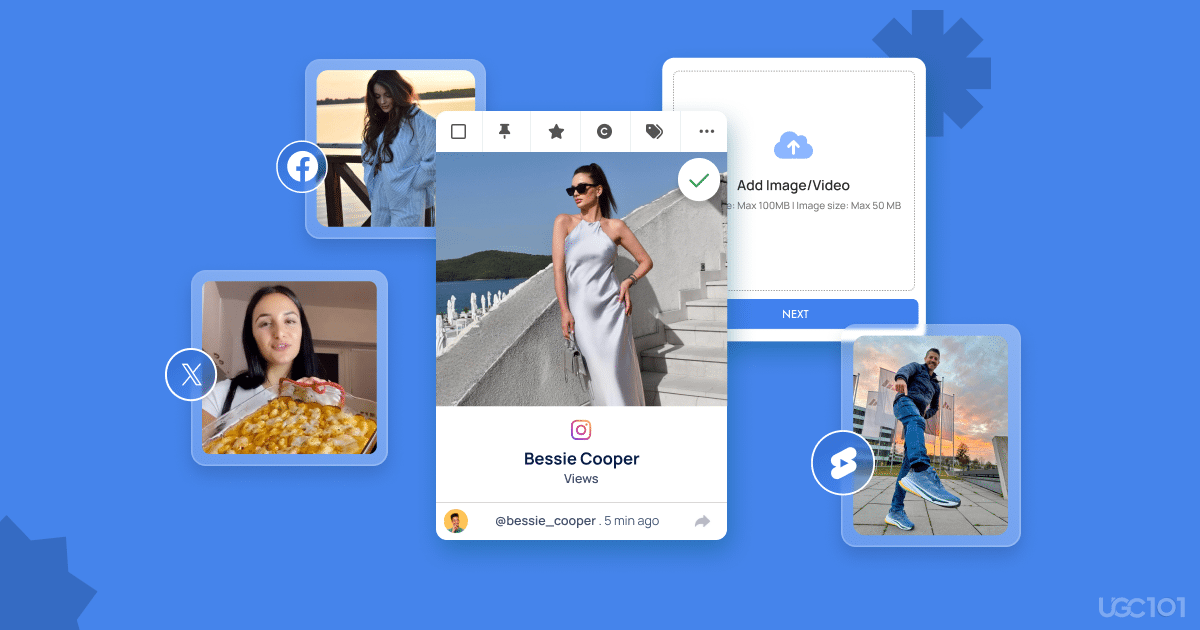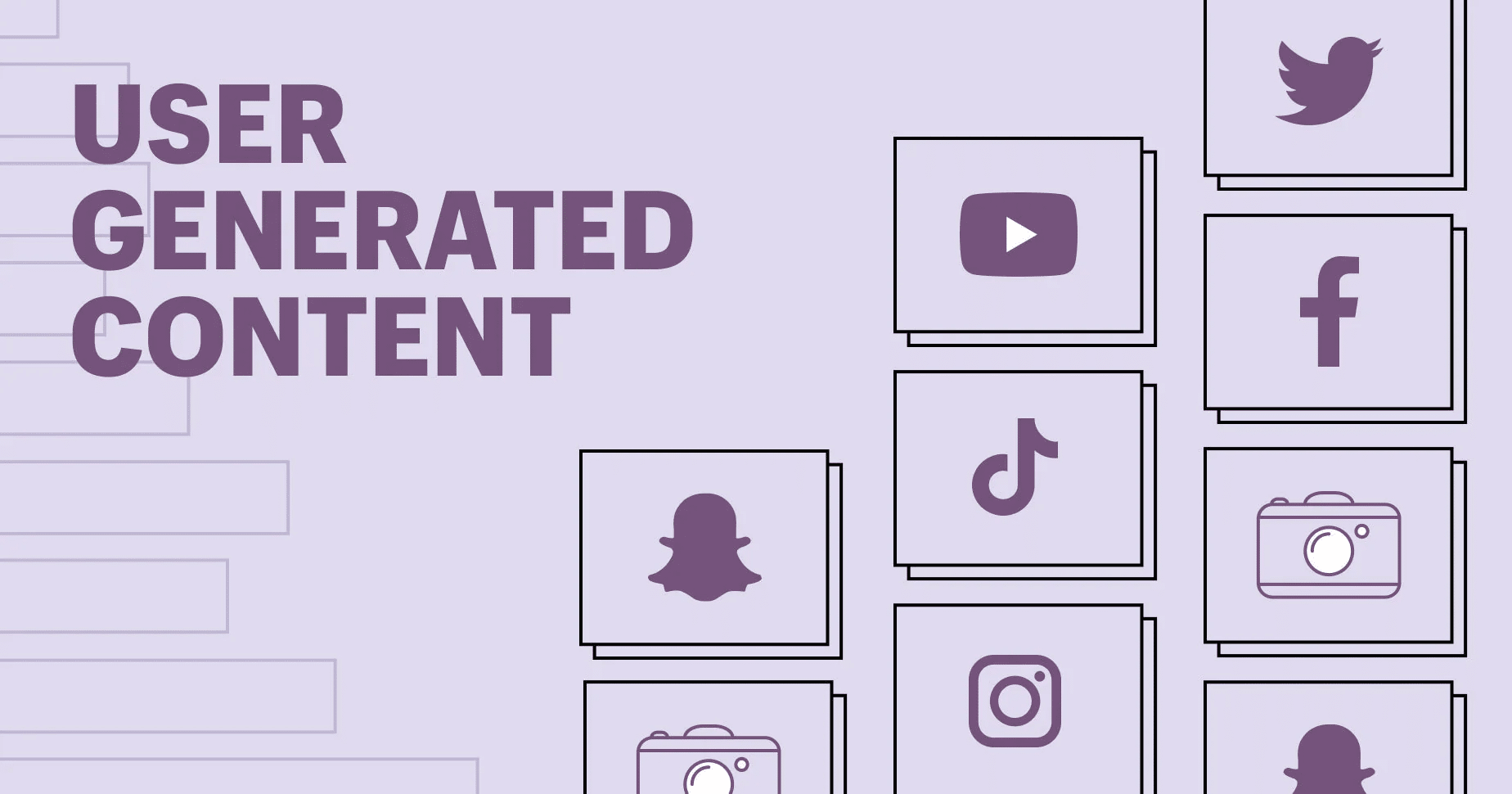Did you know that 86% of consumers believe authenticity is crucial when deciding which brands they support?
Welcome to this comprehensive guide—a compass navigating UGC tools and strategies designed to empower your brand in 2025. This blog is your roadmap to harnessing the potential of UGC.
Explore with me as I unveil must-have tools, each tailored to enhance brand-customer interactions, curate diverse UGC, and amplify brand authenticity.
Discover how these tools and engaging strategies can ignite your brand’s engagement, trust, and community advocacy.
Why Use UGC For Your Brand?
Before we get into the tools, your brand needs UGC for your marketing efforts.
1. Authenticity: UGC is inherently authentic, coming directly from real users’ experiences, opinions, and stories. This authenticity builds trust and credibility for the brand.
2. Engagement: It encourages active participation from the audience, fostering a sense of involvement and community around the brand.
3. Diverse Perspectives: UGC brings in a diverse range of perspectives, showcasing different use cases, styles, and experiences related to the brand and appealing to a broader audience.
4. Cost-Effective Content: It provides a steady stream of content without the brand creating it, saving on content creation costs while maintaining quality and relevance.
5. Social Proof: Positive UGC, such as reviews and testimonials, acts as social proof, influencing potential customers’ decisions and reinforcing the brand’s credibility.
6. Increased Reach and Visibility: Shared UGC often expands the brand’s reach as users share their experiences on their social channels, potentially reaching new audiences.
7. Enhanced Brand Loyalty: When users see their content featured by a brand, it fosters a sense of loyalty and affinity, encouraging continued engagement and support.
8. Interactive Experiences: Tools that leverage UGC, such as shoppable galleries or interactive campaigns, provide engaging experiences, driving higher interaction and conversion rates.
9. Feedback and Improvement: UGC often includes feedback, allowing brands to gather insights, understand customer preferences, and make improvements based on real user experiences.
Overall, the benefits of UGC lie in its ability to humanize brands, strengthen connections with customers, and significantly influence purchasing decisions in today’s digital landscape.
Must-Have UGC Tools For Brands
1. UGC Tool for Content Aggregation:
This tool collects user-generated content from various social media platforms and other sources into a manageable interface. It helps brands curate and showcase diverse UGC, enabling them to leverage customer experiences and stories effectively.
You can use tools like Tagbox, Curator.io, TINT, and Juicer for content aggregation to save time and effort.
2. A Tool to Get UGC Entries: SnapUp
SnapUp is a pioneering tool that streamlines the intricate process of collecting user-generated content (UGC). It serves as an invitation for users to actively contribute content tied to a brand, be it through challenges, contests, or targeted campaigns.
– Unlocking Seamless Submissions:
This innovative tool significantly simplifies the submission process for users. Whether sharing their experiences, creating engaging visuals, or providing reviews and feedback, SnapUp empowers users to contribute effortlessly.
– Fueling User Engagement:
SnapUp is more than just a submission tool; it catalyzes heightened user engagement. Incentivizing users to participate in brand-related activities, contests, or UGC campaigns fosters a sense of involvement and belonging within the brand’s community.
– Optimized Contribution Channels:
Integrating SnapUp into your brand’s initiatives creates an easily accessible avenue for users. Through challenges, specific campaigns, or other creative initiatives, SnapUp becomes the conduit for users to share their unique experiences and perspectives.
– Elevating Brand-Customer Interaction:
SnapUp’s user-friendly interface encourages a diverse range of submissions. From textual reviews to captivating visuals, it captures the essence of user experiences, which, when shared, elevates brand authenticity and customer interaction.
SnapUp redefines the UGC entry process, amplifying brand reach and fostering a vibrant community of engaged users eager to contribute their stories and experiences.
3. UGC Display Tool:
This tool focuses on showcasing curated UGC in an aesthetically pleasing manner. It offers customizable display options, allowing brands to attractively present UGC on their websites or social media platforms.
4. UGC Rights Management Tool:
Managing the legal aspects of UGC is crucial. This tool helps brands obtain the necessary permissions or rights to use the content shared by users, ensuring legal compliance and preventing copyright issues.
5. Hashtag Research Tool:
An essential component of UGC campaigns, this tool assists brands in identifying and analyzing trending or relevant hashtags. It helps optimize content visibility and reach across different social media platforms.
6. Review Aggregator and Display Tool:
This tool aggregates and displays user reviews from various sources for brands reliant on reviews. It aids in managing and showcasing customer feedback, which can significantly influence purchase decisions.
7. Tool for Making Shoppable Galleries:
This tool facilitates the creation of shoppable UGC. It allows brands to tag products within user-generated images, turning them into interactive, purchasable items, enhancing the overall shopping experience.
These tools empower brands to effectively leverage user-generated content, fostering engagement, authenticity, and customer trust in their marketing strategies.
How To Motivate Users To Create UGC?
1. Highlight User Success Stories:
Showcasing success stories of previous user-generated content can inspire others. Highlight how UGC has positively impacted other users or how the brand featured their content. This validation encourages users to contribute their content.
2. Gamification:
Implementing games, challenges, or interactive activities encourages users to engage and create content. Contests with rewards or recognition for the best UGC often prompt increased participation.
3. Feature UGC Often:
Regularly featuring user-generated content on your website, whether on social media, a website, or newsletters, encourages others to contribute. When users see their content showcased, it motivates them to create more.
4. Hashtag Campaigns:
Creating specific, catchy hashtags tied to campaigns or challenges can encourage users to participate. These campaigns often go viral and prompt users to generate content related to the brand or campaign theme.
5. Ask For It:
Sometimes, a simple request or call to action can be powerful. Directly asking your audience to share their experiences, stories, or creations related to your brand can prompt immediate responses.
6. Giveaways:
Offering incentives like giveaways, discounts, or exclusive access to products/services in exchange for UGC motivates users. It provides a tangible benefit for their efforts and encourages participation.
By leveraging these strategies, brands can effectively motivate their audience to generate authentic and engaging content, fostering a strong sense of community and brand advocacy.
Conclusion
The tools we’ve explored are UGC tools to make sharing your experiences with brands accessible. SnapUp’s especially good at this—it helps brands connect with you better.
With these tools and fun ways to engage, brands can motivate you to join in and share your stories. This isn’t just a trend—it’s about building trust and real connections.
Your voice matters. By sharing your experiences, you’re shaping the future of how brands connect with people. It’s all about stories, experiences, and making your voice heard.






